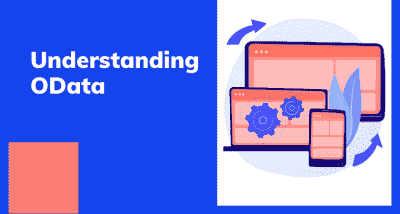Machine Learning In Day-to-day Life
- Amruta Bhaskar
- Aug 10, 2020
- 0 Bemerkungen)
- 1866 Ansichten

The interest in Machine Learning for use in the various domains is expanding as the available amount of data increases with time. Machine learning proposes an abundance of techniques to extricate knowledge from data that can be rendered into purposeful objectives.
ML algorithms can reinforce the field information and automated function mostly related to regulation and optimization. Moreover, machine learning along with computer vision has augmented many domains where medical diagnostic, statistical algorithms, scientific research, etc included. Such practices have already been done in the arena of smartphone applications, computer appliances, online websites, cybersecurity, etc.
The extended data today is prevailing over multiple disciplines, obtaining interferences and valuable knowledge from data has appeared as the latest model of scientific inquiry as well as commercial application. In this blog, we will pick up some applications of machine learning implemented in our daily practices.
1. Commute Estimation
In general, a single trip takes more than average time to complete, multiple modes of transportation are used for a trip including traffic timing to reach the destination. Reducing commute time is not simple yet, here below you find how machine learning aid in reducing commute time,
Google’s Map: Using the location data from smartphones, Google Maps can inspect the agility of shifting traffic at any time, moreover map can organize user-reported traffic like construction, traffic, and accidents. By accessing relevant data and appropriate fed algorithms, Google Maps can reduce commuting time by indicating the fastest route.
Riding Apps: From how to fix the price of the ride, and how to minimize the waiting time to how do riding cars fix up one’s trip with other passengers to lessen diversion. Yes, the solution is machine learning. ML assists the company to estimate the price of a ride, computing optimal pickup location and ensuring the shortest route of the trip, also for fraud detection.
2. Email Intelligence
Spam Filters: Some rules-based filters aren’t served actively in an email inbox such as when, for example, a message comes with the words “online consultancy”, “ online pharmacy”, or from “unknown address”. ML is offering a powerful feature that filters email from a variety of signals, like words in the message, metadata of the message(such as who sent the message, from where it is sent). Even though it filters the emails based on “everyday deals” or “welcome messages” etc. With the use of ML, Gmail filters 99.9% of spam messages.
Email Classification: Gmail categories emails into groups Primary, Promotions, Social, and Update and label the email as important.
Smart Replies: You must have observed how Gmail prompts simple phrases to respond to emails like “Thank You”, “Alright”, “Yes, I’m interested”. These responses are customized per email when ML and AI understand, estimate, and reflect on how one counters over time.
3. Social Networking
From personalizing your news feed to better ads targeting, social media platforms are utilizing machine learning for their own and user benefits. Here are a few examples that you must be noticing, using, and loving in your social media accounts, without realizing that these wonderful features are nothing but the applications of ML.
For eg. Facebook: While uploading a photo on Facebook, it automatically reflects faces and suggests friends tag. Facebook uses AI and ML to identify faces. It uses the ANN algorithm that imitates the human brain and power facial recognition software. Facebook uses AI to personalize newsfeed and makes sure to reflect posts that entertain one. It shows ads of a particular business that are relevant to one's' interest.
4. Virtual Personal Assistants
Siri, Alexa, Google Now are some of the popular examples of virtual personal assistants. As the name suggests, they assist in finding information, when asked over voice. All you need to do is activate them and ask “What is my schedule for today?”, “What are the flights from Germany to London”, or similar questions. For answering, your assistant looks out for the information, recalls your related queries, or send a command to other resources (like phone apps) to collect info. You can even instruct assistants for certain tasks like “Set an alarm for 6 AM next morning”, “Remind me to visit Visa Office day after tomorrow”.
Machine learning is an important part of these personal assistants as they collect and refine the information based on your previous involvement with them. Later, this set of data is utilized to render results that are tailored to your preferences.
Virtual Assistants are integrated into a variety of platforms. For example:
Smart Speakers: Amazon Echo and Google Home
Smartphones: Samsung Bixby on Samsung S8
Mobile Apps: Google Allo
5. Online Customer Support
A number of websites nowadays offer the option to chat with customer support representative while they are navigating within the site. However, not every website has a live executive to answer your queries. In most of the cases, you talk to a chatbot. These bots tend to extract information from the website and present it to the customers. Meanwhile, the chatbots advance with time. They tend to understand the user queries better and serve them with better answers, which is possible due to its machine learning algorithms.
6. Online Fraud Detection
Machine learning is proving its potential to make cyberspace a secure place and tracking monetary frauds online is one of its examples. For example, Paypal is using ML for protection against money laundering. The company uses a set of tools that helps them to compare millions of transactions taking place and distinguish between legitimate or illegitimate transactions taking place between the buyers and sellers.
7. Search Engine Result Refining
Google and other search engines use machine learning to improve the search results for you. Every time you execute a search, the algorithms at the backend keep a watch at how you respond to the results. If you open the top results and stay on the web page for long, the search engine assumes that the results it displayed were by the query. Similarly, if you reach the second or third page of the search results but do not open any of the results, the search engine estimates that the results served did not match requirement. This way, the algorithms working at the backend improve the search results.
8. Product Recommendations
You shopped for a product online a few days back and then you keep receiving emails for shopping suggestions. If not this, then you might have noticed that the shopping website or the app recommends you some items that somehow matches with your taste. Certainly, this refines the shopping experience but did you know that it’s machine learning doing the magic for you? Based on your behaviour with the website/app, past purchases, items liked or added to cart, brand preferences etc., the product recommendations are made.
9. Videos Surveillance
Imagine a single person monitoring multiple video cameras! Certainly, a difficult job to do and boring as well. This is why the idea of training computers to do this job makes sense.
The video surveillance system nowadays is powered by AI that makes it possible to detect crime before they happen. They track unusual behaviour of people like standing motionless for a long time, stumbling, or napping on benches etc. The system can thus give an alert to human attendants, which can ultimately help to avoid mishaps. And when such activities are reported and counted to be true, they help to improve the surveillance services. This happens with machine learning doing its job at the backend.














